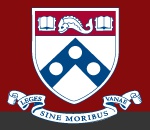Cation Order
A central theme of our research is establishing the effect of cationic order and extended defects on the electronic properties of oxide systems. By controlling the bulk chemistry, the method of synthesis, and the details of the thermal processing it is possible to induce variable degrees of nano-level ordering in many oxide systems.
Our research focuses on the characterization of the ordering and defects using high resolution TEM, and x-ray/neutron diffraction, and examining the effect of solid solution formation on the behavior of the various systems. These data are coupled to an understanding of the energetics of the different systems to permit tailoring of the atomistic level structure and control of the properties. More details can be found in our publications on microwave ceramics and ferroelectrics and in the general publications list.
In our most recent work we have focused on an unusual family of perovskites containing under-sized cations such as Li on the A-site (e.g. Nd2/3-xLi3x)TiO3). These systems undergo a series of ordering and phase separation reactions resulting in the formation of nanoscale "chessboard" structures. The nanostructural modulations arise from a periodic separation into domains of two phases with nanometer dimensions, one Li-rich with a composition (Nd1/2Li1/2)TiO3 and the other Li-free with a composition Nd2/3TiO3. A remarkable feature of this structure is the phase separated domains form a superstructure that extends across the entire crystal, with a periodicity that can be tuned by changing the overall composition. This is the first observation of periodic phase separation in any inorganic solid. The structures offer the potential for new classes of perovskites that could serve as templates for the assembly of nanoscale objects or molecular overlayers. This work has been featured in Nature and Nature Materials.

Currently this work is supported by the National Science Foundation (Ceramics Division) under Grant #DMR0704255.
Any opinions, findings and conclusions or recommendations expressed in this material are those of the authors and do not necessarily reflect the views of the National Science Foundation (NSF)
